Disclaimer For educational purposes only. Do not use as medical advice
<strong>About</strong><strong>Botany</strong><strong>Chinese Medicine</strong><strong>Caution</strong>
| Health Benefits |
| For: Diabetes • Thyroid disorder • Allergy • Frequent urination • High fever • Hemorrhage • Menopause • Insomnia |
| Attributes: Immune system booster • coagulant • antidiabetic • hepatoprotective • hypotensive • anti-aging • antioxidant • antihistamine • emmenagogue |
| Research: |
|
Articles:
|
Constituents:
Sterol • acteoside • beta sitosterol • campesterol • arginine • rehmannin • stigmasterol • manitol • glycosides • polysaccharides (catalpol) • over 20 kinds of amino acids • alkaloids • phosphoric acid • organic acids • adenosine • lecithin • vitamin A |
| Photos (Click to enlarge) |
|
|
| Fun Facts |
Other Names: Gan di Huang • Chinese Foxglove • Sukchihwang (Korean) • Jukujio (Japanese)
Plant Family: Scrophulariaceae |
| Sheng Di Huang is dried rehmannia root. Both the leaves and roots of the rehmannia glutinosa plants are edible. Like many roots, how it is processed has different medicinal effects. This post is focused on the rehmannia root that has been dried only. This herb is typically used as a part of a formula. |
| Species |
| Rehmannia Glutinosa ( Sheng Di Huang and Shu Di Huang) are the same root but different processing methods. Shú dì huáng is teamed with water or alcohol. It literally translates into "cooked" di huang. Sheng Di Huang is raw or dried.
Rehmannia Elata is not di huang and is only used for ornamental purposes.
Digitalis purpurea is a foxglove specie, but is poisonous if ingested. However, one of its most powerful chemicals, digoxin, is used to treat heart conditions like atrial flutter, heart failures, and artial fibrillation was isolated in this plant in 1930. It's sold under brand names like Lanoxin. It's on the World Health Organization's list of Essential Medicines. |
| Rehmannia glutinosa is NOT in the USDA Plant Database. |
|
USA: Rehmannia glutinosa is not available in the wild. USDA Zones: 7-11
Native: China, Korea
Habitats: Mountain slopes, stony grounds, roadsides
This plant grows to 2-3 feet tall and up to 24 inches wide. It can be grown in full sun or partial shade. Neutral pH of about 6.5 to 7.0.¹ Bloom Time is May to September. Perennial.
|
| Category: Clear Heat Cool Blood |
| English: Rehmannia Pinyin: Sheng Di Huang Pharmaceutical: Radix Rehmannia Glutinosae |
| Organs: Heart • Kidney • Liver Temperature: Cold |
| Taste: Sweet • Bitter Toxicity: Low. Can cause mild stomach ache, dizziness, palpitations and diarrhea. Symptoms often subsides after a few doses. |
| Patterns: Heart fire • Warm pathogenic diseases entering the nutritive level • Heart Yin deficiency |
| Actions: Clear heat • Cools hot blood (nosebleeds, bloody vomit, bloody urine, bloody stool) • Nourish Yin • Cool heart fire • Generate fluids |
| Indications: High fever • Red tongue • Thirsty • Oral sores • Insomnia • Dry mouth • Constipation • Sore throat |
| Contraindications: Yang deficiency • Blood deficiency • Spleen deficiency • Stomach deficiency • Can be sticky and cloying, careful with digestive disorders |
| Typical Dosage: 9-15g Guidelines |
| Parts Used: Leaves • Root |
| Other: |
| Combine With |
Purpose |
| Shu Di Huang |
Yin deficiency and devastated blood heat symptoms |
| Mai Men dong + Sha shen |
Stomach yin deficiency: dry mouth, thirsty, red tongue |
| E Jiao |
Heat: Coughing, nosebleed, uterine bleeding, vomiting with blood |
| Zhi Mu + Qing Hao |
Yin heat deficiency: night fever only, red tongue, emaciation |
| Xuan Shen |
Severe Yin heat and exhausted Yin: red tongue, thirsty, dry throat, fast and thready pulse, and irritability |
| Bai Shao + Bai Mao Gen + Di Yu |
Blood heat: blood in urine, blood in vomit, nosebleed |
| Sha Ren |
Added to mitigate Di Huang side effects (diarrhea, nausea and stomach aches) |
| Formulas with Sheng Di Huang: |
| An Chong Tang • Ai Tai Yin • Bai He Gu Jin Tang • Bao Yin Jian • Bu Shen Yi Gan Tang • Cong Bai Qi Wei Yin • Da Ding Feng Zhu • Da Huang Zhe Chong Wan • Da Qin Jiao Tang • Da Zao Wan • Dang Gui Liu Huang Tang • Dang Gui Yin Zi • Dao Chi Qing Xin Tang • Dao Chi San • Du Huo Ji Sheng Tang • e Jiao Ji Zi Huang Tang • Hei Xiao Yao San • Huang Tu Tang • Jin Ling Tang • Jiao ai Tang • Jin Gui Shen Qi Wan • Jiu Wei Qiang Huo Tang • Ling Jiao Gou Teng Tang • Long Dan Xie Gan Tang • Ming Mu Di Huang Wan • Ping Gan Kai Yu Zhi Xue Tang • Qing Hao Bie Jia Tang • Qing Re Zhi Beng Tang • Qing Wen Bai Du Yin • Qing Ying Tang • Rou Fu Bao Yuan Tang • Run Chang Wan • San Jia Fu Mai Tang • Shen Qi Wan • Sheng Yu Tang • Shu Jing Huo Xue Tang • Si Sheng Wan • Tian Wang Bu Xin Dan • Tong You Tang • Xi Jiao Di Huang Tang • Xiao Feng San • Xiao Ji Yin Zi • Xin Jia Huang Long Tang • Xue Fu Zhu Yu Tang • Yang Yin Qing Fei Tang • Yi Guan Jian •Yi Wei Tang • Yi Yin Jian • Zeng Ye Cheng Qi Tang • Zeng Ye Tang • Zhi Gan Cao Tang • Zhu Sha An Shen Wan |
| Alert |
Be cautions with all medicine.
- Do not use while pregnant with blood deficiency
- Do not use bronze or iron pots to cook this herb
- Do not cook with onion, radish, or garlic
|
| Potential Drug Interactions |
|
Herbal medicine may interact negatively with pharma drugs and other herbs. Examples below:
Herbs: ♦Counteracts Bei Mu, Xie Bai, Cong Bai ♦Antagonize: Niu Huang ♦Incompatible: Lai Fu Zi, iron ♦Garlic ♦Onion ♦Radish ♦ Antidiabetic: Mei Gui Hua, Du Zhong, Dang Shen, HuoLong Guo, rougui, Celery, Chamomile, Moringa Tree, Basil, Ku Gua, Artichok, Hibiscus, Gou Qi Zi, Ju Hua, Xia Ku Cao, Dang Gui, Zhi Mu, Shi gao, Xuan Shen, Cang Zhu, Shan yao, Huang Qi
Pharma Drugs:♦ Antidiabetic: Acarbose (Precose ), Alogliptin and Metformin HCl Tablets (Kazano), Alogliptin and Pioglitazone Tablets (Oseni ), Albiglutide (Tanzeum), Alogliptin (Nesina), Bromocriptine Mesylate (Cycloset, Parlodel), Canaglifozin (Invokana), Canagliflozin and Metformin (Invokamet), Chlorpropamide (Diabinese), Dapagliflozin (Farxiga), Dulaglutide (Trulicity), Empagliflozin (Jardiance), Glimepiride (Amaryl), Glyburide (DiaBeta, Glynase), glipizide (Glucotrol), Insulin, Miglitol (Glyset), Metformin, Linagliptin (Tradjenta), Saxagliptin (Onglyza), Sitagliptin (Januvia), Nateglinide (Starlix), Repaglinide (Prandin), Tolazamide (Tolinase), Tolbutamide (Orinase, Tol-Tab), Rosiglitazone (Avandia), Pioglitazone (Actos), Pramlintide (SymlinPen 120, SymlinPen 60)
|
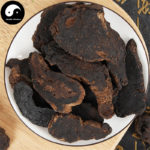
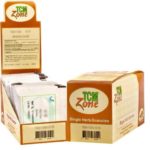 Granules
Granules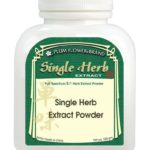 Powder
Powder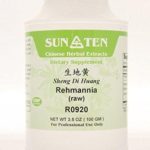 Granules
Granules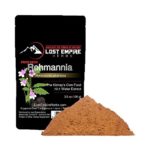 Powder
Powder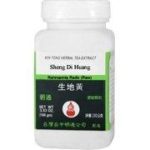 Granules
Granules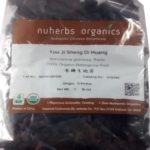 Roots
Roots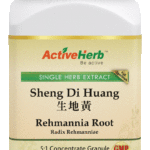 Granules
Granules
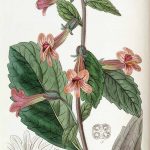
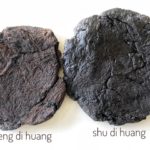
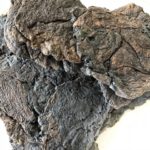
0 Comments